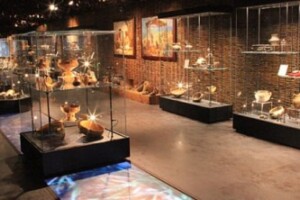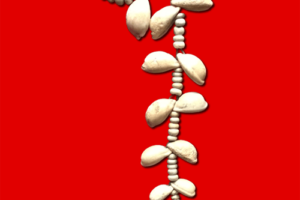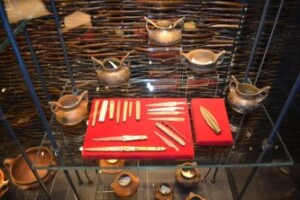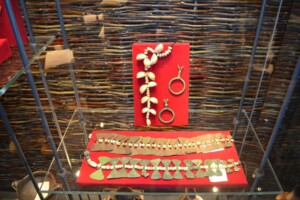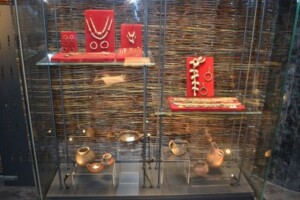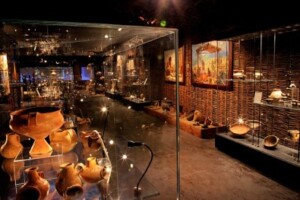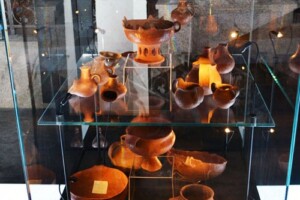
The Bronze Age culture on our territory was formed during the last waves of the major Indo-European migrations. In the beginning, it was connected with the northern Balkans and belonged to the central Balkan complex of the Early Bronze Age, which covered a broader area of the Balkan Peninsula. The archaeological investigation of the Bronze Age on our territory is still in its beginnings, although certain results were obtained for the region of Pelagonija and the Vardar valley, which also represent the best investigated regions.
A significant change may be observed in the Late Bronze Age, when strong Aegean influences may also be noticed, which to a great extent changed the character of the Bronze Age, and its major cultural features were formed under the strong influence of the Mycenaean world. All this is confirmed by systematic investigations over many years at the site of “Dimov Grob” in the village of Ulanci, Gradsko.
The Bronze Age collection in the Archaeological Museum of Macedonia represents a single entity, through which only in this one place may be seen the results of investigations of the Bronze Age in the Republic of Macedonia until today. It is composed of items that show the daily activities of the population and the manner of inhumation and funeral customs characteristic of the Bronze Age in Macedonia. Through them, a picture is obtained of the chronological, territorial and cultural connections of our territory with the broader region of the Balkan Peninsula and southeastern Europe.
The Bronze Age collection consists of artifacts obtained through archaeological excavations at several sites:
- “Varnici” at Demir Kapija;
- “Tumba” at the village of Kravari, Bitola;
- “Vranishta” at Struga;
- “Kaptaza” at the village of Rashche, Skopje;
Sveti Nikole; - “Pribovce” at the village of Lopate, Kumanovo;
- “Tumba” at the village of Kanino, Bitola;
- “Bakarno Gumno” at the village of Chepigovo, Prilep;
- “Tumba” at the village of Radobor, Bitola;
- “St. Nedela” at the village of Asamati, ?
- “Dimon” and “Stolot” at the village of Ulanci, Gradsko.
Within this collection, the objects from the necropolis “Dimov Grob”, which clarify the picture of the Late Bronze Age in Macedonia, have an important place. Through analysis of inhumation and funeral forms, customs and funerary gifts, a cultural and chronological determination of the Late Bronze Age is made. Also, the archaeological excavations at the site of “Dimov Grob” present to the public a new group of the Late Bronze Age, in the valley of the Vardar River, which from the eponymous site is named Ulanci. This cultural group emphasizes and defines the connections of our territory with the developed Aegean south, especially with the Mycenaean civilization.
Goce Kocevski – archaeologist , senior curator for Bronze age
gkocevski74@yahoo.com

